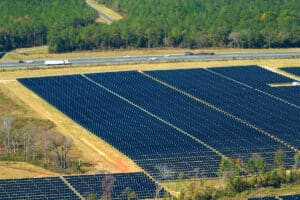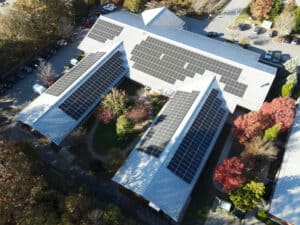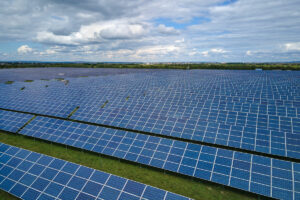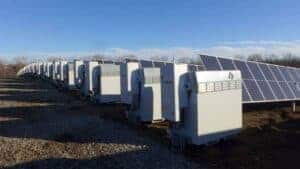Electricity-grid vulnerabilities were deeply exposed in the wake of Superstorm Sandy and its associated storm surge; as a single outage at substation caused a sweeping black-out across downtown Manhattan, New York.
What makes matters worse, is the climate change that science anticipates future storms will be stronger and more frequent.
In order to facilitate and improve security, resiliency, and reliability of the macrogrid system, the U.S. Green Building Council (USGBC) has developed PEER, Performance Excellence in Electricity Renewal, the nation’s first comprehensive, consumer-centric, data-drive tool for evaluating power system performance.
Overview
Modeled after the Leadership in Energy and Environmental Design (LEED) certification program, PEER seeks to incentivize the development of smarter buildings and communities by adopting a rating system that addresses power quality and supply availability, ability to manage interruptions and mitigate risk, while increasing restoration, redundancy, and microgrid capabilities.
The expectation is that as a critical mass of buildings and developments achieve PEER certification, the electricity-grid system will become stronger and more resilient, thus preventing disasters caused by extreme-weather events.
Today, there are no adequate markets and metrics to capture the benefits that smart grid capabilities and smarter buildings provide to the larger electrical system. PEER helps fills this major market gap by providing an opportunity for power technologies, systems, and other innovations to gain competitive advantage.
The PEER program also may serve to assist in the creation of monetization pathways for service providers seeking to enable grid secure benefits. Thus, PEER may bring new participants into the energy mix such as main street corporates and traditional real estate firms as they learn about the benefits and opportunities provided by expanded demand response capabilities, distributed renewable generation, and smart grid readiness.
The Future
Projects eligible for PEER certification may involve everything from retrofits to existing buildings and infrastructure, to a newly developed business campus.
First, projects must be registered with the Green Business Certification Inc. (GBCI), which administers the LEED certification program, as well as several other performance standards rating certifications.
GBCI provides a toolkit for developers to self-screen projects and prepare their application for certification.
To achieve certification, projects are considered against four metrics: (1) reliability and resiliency; (2) energy efficiency and environment; (3) operational effectiveness; and (4) customer contribution.
The PEER process is relatively new, with only a few projects working their way through the new program, but once the new standard catches on certifications are expected to increase.






